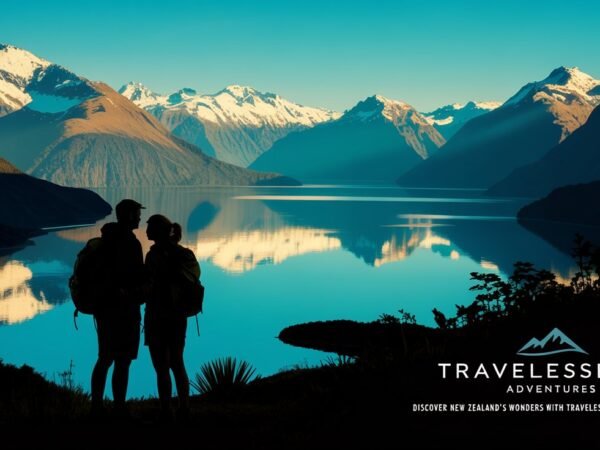Trekking to Everest Base Camp presents a unique opportunity to experience one of the world’s most iconic landscapes, but timing your trek is crucial due to the region’s distinct seasonal variations. The Everest region experiences a variety of weather conditions throughout the year, significantly influencing trekking experiences. Understanding these seasonal patterns helps in choosing the optimal time to undertake the trek, ensuring a safe and enjoyable journey.
Spring (March to May) is the most popular season for trekking to Everest Base Camp. During this period, the weather is relatively stable, and the temperatures are more manageable, ranging from -10°C to 10°C (14°F to 50°F) at Base Camp. This season benefits from clearer skies and less chance of heavy snowfall, offering stunning views of the Himalayan peaks. The spring season also coincides with the pre-monsoon period, which means there are fewer chances of rain, although occasional showers can occur. Additionally, the spring trek allows trekkers to witness the vibrant rhododendron blooms and the bustling activity of climbers preparing for their summit attempts.
Autumn (September to November) is another excellent time for the trek, following the monsoon season. The post-monsoon weather conditions typically bring clear skies and crisp air, making for pleasant trekking experiences. Temperatures during autumn range from -10°C to 15°C (14°F to 59°F) at Base Camp. The trails are generally less crowded compared to spring, providing a quieter experience while still offering spectacular views of Everest and the surrounding peaks. However, early autumn may still experience some residual rain, and temperatures drop significantly as the season progresses, particularly in late November.
Winter (December to February) and summer (June to August) are less favorable for trekking to Everest Base Camp. Winter brings harsh cold, with temperatures plunging well below freezing, often making the trek extremely challenging due to snow and ice on the trails. The risk of avalanches and extreme cold can pose serious risks, and the trek may be less accessible. Conversely, summer is the monsoon season, characterized by heavy rains and increased risk of landslides. The trails become muddy and slippery, and visibility can be poor due to frequent cloud cover and rain, making trekking conditions less ideal.
In summary, the best times to trek to Everest Base Camp are during the spring and autumn seasons when the weather conditions are most favorable for a safe and enjoyable experience. Understanding these seasonal variations allows trekkers to plan accordingly, ensuring they are prepared for the challenges and rewards of this remarkable journey.
Introduction to the Everest Region’s Unique Climate
The Everest region, situated in the Himalayas, is renowned for its unique and extreme climate. Its weather is influenced by high altitude, geographical location, and seasonal variations, creating distinct conditions throughout the year. The region experiences extreme temperatures, ranging from frigid cold in winter to moderately warm temperatures in summer. Due to its altitude, the weather can change rapidly, with significant variations between day and night. This variability is further complicated by the influence of the monsoon, which brings heavy rains to the lower elevations. The Everest region’s climate is crucial for trekkers to understand as it impacts trail conditions, visibility, and overall trekking experience. Proper planning, based on seasonal weather patterns, ensures trekkers are prepared for the challenges and can maximize their enjoyment while navigating the breathtaking landscapes of the Everest Base Camp trek.
Understanding the Four Seasons of the Khumbu Valley
The Khumbu Valley, home to Everest Base Camp, experiences four distinct seasons, each bringing unique weather conditions that influence trekking experiences. Spring (March to May) is characterized by rising temperatures and clearer skies, making it an ideal time for trekking. This season sees blooming rhododendrons and minimal rainfall. Summer (June to August) is the monsoon season, with heavy rains and high humidity, leading to muddy trails and increased risk of landslides. Autumn (September to November) follows the monsoon and offers clear skies and crisp air, making it another favorable time for trekking. The cooler temperatures and reduced humidity provide excellent trekking conditions. Winter (December to February) is marked by cold temperatures and snow, making the trails challenging and less accessible. Understanding these seasonal variations helps trekkers choose the best time for their journey and prepare for the weather conditions they might encounter in the Khumbu Valley.
Trekking in Spring: Blooming Rhododendrons and Mild Temperatures
Spring, spanning from March to May, is a favored time for trekking in the Everest region, particularly due to its mild temperatures and stunning natural beauty. During this season, the temperatures at Everest Base Camp are relatively moderate, ranging from -10°C to 10°C (14°F to 50°F), which makes trekking more comfortable compared to the extreme cold of winter. One of the highlights of spring trekking is the vibrant display of rhododendrons in full bloom, adding a splash of color to the landscape. The clear skies and lower likelihood of heavy snowfall also contribute to excellent visibility and breathtaking views of the Himalayas. However, trekkers should be prepared for occasional rain showers and the higher number of trekkers and climbers during this peak season. Overall, spring offers a pleasant and visually rewarding trekking experience in the Everest region.
Advantages and Disadvantages of Trekking in Spring
Trekking in spring (March to May) in the Everest region offers several advantages but also presents some challenges. One of the primary benefits is the favorable weather conditions, with mild temperatures ranging from -10°C to 10°C (14°F to 50°F) at Everest Base Camp, making for a more comfortable trekking experience. The season is known for clear skies and stunning views, as well as the opportunity to witness the blooming of rhododendrons, adding vibrant colors to the landscape. However, spring also has its disadvantages. It is a peak trekking season, resulting in crowded trails and higher costs for permits and accommodations. Additionally, while snowfall is less frequent than in winter, occasional rain showers can still occur, impacting trail conditions. Despite these challenges, the overall pleasant weather and beautiful scenery make spring a popular choice for trekking to Everest Base Camp.
Challenges of the Summer Monsoon Season for Trekkers
The summer monsoon season, from June to August, presents several challenges for trekkers in the Everest region. This period is characterized by heavy rainfall, high humidity, and increased cloud cover. The monsoon rains often lead to muddy and slippery trails, making trekking conditions more difficult and increasing the risk of slips and falls. Additionally, the rain can cause landslides and rockfalls, posing safety risks on certain sections of the trek. Visibility can be significantly reduced due to persistent cloud cover and fog, diminishing the panoramic views that trekkers seek. The combination of humidity and rain can also lead to discomfort and increased risk of health issues such as fungal infections or gastrointestinal problems. Despite these challenges, the monsoon season offers a quieter trekking experience with fewer crowds and lush, green landscapes, appealing to those who prefer solitude and can handle the adverse weather conditions.
Navigating the Unpredictable Weather during the Monsoon
Navigating the unpredictable weather during the monsoon season (June to August) in the Everest region requires careful preparation and flexibility. The monsoon brings heavy rains, high humidity, and frequent cloud cover, which can significantly impact trekking conditions. Trekkers need to be prepared for muddy, slippery trails and increased risks of landslides and rockfalls due to the rain. Proper gear, such as waterproof clothing and sturdy, slip-resistant boots, is essential to manage the wet conditions and prevent discomfort. Carrying a good quality rain cover for your backpack and using water-resistant gear can help keep your equipment and clothing dry.
Weather conditions can change rapidly, so it’s crucial to remain flexible with your trekking plans. Be prepared for altered routes or delays due to adverse weather. Regularly check weather forecasts and stay informed about local conditions through your guide or trekking agency. Despite the challenges, the monsoon season can offer a quieter trekking experience with fewer crowds and a lush, green landscape. Embracing these conditions with proper preparation ensures a safer and more enjoyable trek, even in the midst of the monsoon’s unpredictability.
Treasures of Trekking in the Autumn: Clear Skies and Vibrant Colors
Autumn (September to November) in the Everest region is celebrated for its clear skies, crisp air, and vibrant colors, making it an excellent time for trekking. Following the monsoon, the weather becomes more stable, with reduced rainfall and cooler temperatures that range from -10°C to 15°C (14°F to 59°F) at Everest Base Camp. This season provides some of the clearest views of the Himalayan peaks and the surrounding landscape, offering trekkers stunning panoramic vistas.
The Khumbu Valley transforms into a canvas of rich autumnal hues, with the landscape featuring golden leaves and clear, blue skies that enhance the beauty of the trek. The cooler temperatures and lower humidity make trekking more comfortable compared to the hot and humid summer months. Autumn also typically sees fewer trekkers than the spring season, resulting in a quieter, more serene experience on the trails. However, temperatures drop significantly as the season progresses, and trekkers should be prepared for colder nights and potential snow as they ascend higher altitudes.
Factors to Consider when Trekking in the Fall Season
When trekking in the fall (September to November) in the Everest region, several factors should be considered to ensure a successful and enjoyable experience. Weather conditions are generally favorable with stable, clear skies and cooler temperatures, but temperatures can drop significantly, especially at higher altitudes, so appropriate clothing is essential. Crowds are typically lower compared to the spring season, offering a quieter trekking experience, but it’s still important to book accommodations and permits in advance.
Daylight hours are shorter in fall, so plan your trekking schedule to accommodate this and ensure you have ample daylight for travel. Additionally, be aware of potential early snowfall in late autumn, which can impact trail conditions and require adjustments to your plans. It’s also crucial to stay hydrated and maintain a balanced diet to cope with the cooler temperatures and higher exertion levels. By considering these factors and preparing accordingly, trekkers can enjoy the beauty of the autumn season in the Everest region while navigating the challenges it may present.
Exploring the Winter Wonderland of the Everest Region
Winter (December to February) in the Everest region offers a truly unique experience, transforming the landscape into a stunning winter wonderland. The season is characterized by extreme cold, with temperatures at Everest Base Camp often dropping well below freezing, sometimes reaching -20°C (-4°F) or lower. Snow covers the trails and peaks, creating a picturesque and serene environment that is starkly different from the bustling trekking seasons of spring and autumn.
The winter trek offers unparalleled tranquility and solitude, as fewer trekkers venture to Everest Base Camp during this harsh season. The snow-clad landscape provides breathtaking views and a sense of isolation that many find deeply rewarding. However, winter trekking requires meticulous preparation. Trekkers must be equipped with high-quality, insulated clothing, including thermal layers, waterproof outer layers, and robust, insulated boots. Additionally, carrying adequate supplies of food and water is crucial, as resupply options may be limited.
Unique Experiences and Considerations for Winter Trekkers
Winter trekking in the Everest region offers unique experiences but also comes with specific considerations. The stark beauty of snow-covered peaks and quiet trails provides a sense of peace and isolation that is rare during other seasons. Trekkers can enjoy uninterrupted views of the Himalayas and the crisp, clear air, enhancing the overall experience. The winter season also means fewer crowds, allowing for a more solitary and personal journey.
However, the extreme cold presents significant challenges. Temperatures can plunge to dangerously low levels, requiring specialized gear to stay warm and avoid frostbite. Trail conditions can be treacherous, with icy and snow-covered paths requiring careful navigation. The risk of avalanches and the need for avalanche awareness and safety measures are also heightened. Trekkers must be prepared for limited services, as some lodges and facilities may be closed due to the season. Additionally, the reduced daylight hours require careful planning to ensure safe travel and adequate time for acclimatization and rest. Despite these challenges, winter trekking provides a rare and rewarding adventure for those prepared for its demands.
Comparative Analysis of Seasonal Trekking Conditions
Seasonal variations profoundly affect trekking conditions in the Everest Base Camp Map, each season offering distinct advantages and challenges. Spring (March to May) is highly favored for its moderate temperatures and clear skies, making it an ideal time for trekking. During this period, temperatures at Everest Base Camp range from -10°C to 10°C (14°F to 50°F), and the trails are generally dry with minimal snowfall. However, the increased number of trekkers and climbers during this peak season can lead to crowded trails.
Summer (June to August), the monsoon season, brings significant challenges due to heavy rainfall and high humidity. This results in muddy, slippery trails and a higher risk of landslides. Visibility is often poor, and trekking conditions can be uncomfortable. Despite these difficulties, the monsoon season offers a lush, green landscape and fewer crowds.
Autumn (September to November) is another popular season, characterized by stable weather conditions following the monsoon. Clear skies, cooler temperatures, and fewer trekkers make it a favorable time for trekking. However, temperatures drop as the season progresses, which can affect comfort and safety.
Winter (December to February) presents extreme cold and snow-covered trails, creating a winter wonderland but with significant challenges. The trails are quieter, but the extreme cold and potential for avalanches require careful preparation and specialized gear.
Each season offers a unique trekking experience, influenced by weather conditions, crowd levels, and trail accessibility.
Fluctuations in Crowd Levels and Lodging Availability
Crowd levels and lodging availability at Everest Base Camp vary significantly across different seasons. Spring is the peak trekking season, attracting the largest number of trekkers and climbers. This high volume can lead to crowded trails and busy lodges, which may require advanced bookings to secure accommodation. The influx of visitors during this time can also lead to increased prices for lodging and services.
Autumn is somewhat less crowded than spring but still popular among trekkers. The reduced number of trekkers compared to spring often results in better availability of lodges and more peaceful trails. However, as the season progresses, lodging options may become more limited, especially in the later months.
Summer, during the monsoon season, sees fewer trekkers due to the challenging weather conditions. This reduction in visitors can lead to greater availability of lodging and potentially lower prices, though the quality of accommodations may vary due to seasonal closures or reduced services.
Winter has the fewest trekkers due to the harsh weather conditions. This results in the most tranquil trails and often the best availability of lodging. However, some lodges may be closed for the season, and those that remain open might have reduced services. Trekking during winter requires thorough planning to ensure accommodations are available and suitable for the extreme conditions.
Variations in Trekking Costs and Logistics by Season
The costs and logistics of trekking to Everest Base Camp fluctuate depending on the season. Spring is the most expensive time to trek, with higher costs for permits, lodging, and flights due to high demand. Booking in advance is crucial to secure both accommodations and necessary permits, which can also be more costly during this peak season.
Summer often presents lower trekking costs, as the monsoon season deters many trekkers, leading to reduced prices for accommodation and possibly lower fees for permits. However, additional costs may arise from the need for specialized rain gear and the potential for unexpected delays or changes in logistics due to the weather.
Autumn sees costs and logistics similar to spring, but generally at a lower rate due to reduced demand. Accommodations are more accessible, and while permit costs remain stable, overall expenses might be less compared to the spring peak.
Winter generally offers the lowest costs, as fewer trekkers lead to lower prices for lodging and permits. However, the need for specialized cold-weather gear and potential difficulties with travel logistics, such as flight cancellations due to weather, can offset some of the savings. Winter trekking also requires careful planning and additional safety measures, which might involve extra expenses.
Seasonal Impact on Wildlife and Ecosystem Preservation
The seasonal variations in the Everest region significantly impact wildlife and ecosystem preservation. Spring brings a burst of life to the region as migratory birds return and flowers, such as rhododendrons, bloom. The relatively mild weather supports diverse flora and fauna, contributing to a vibrant ecosystem.
Summer’s monsoon rains lead to lush vegetation and a temporary increase in biodiversity, but heavy rains can also cause soil erosion and damage to delicate ecosystems. The high humidity and frequent rain can impact wildlife habitats, making some areas less accessible to both animals and trekkers.
Autumn sees a decline in rainfall, and many species begin preparing for the winter months. The cooler temperatures and reduced rainfall help stabilize the environment, supporting ongoing preservation efforts. Wildlife is often more visible as they prepare for winter, providing opportunities for observation and study.
Winter’s extreme cold and snow cover greatly affect wildlife and the ecosystem. Many animals migrate to lower altitudes or hibernate, and the snow can impact plant life. The harsh conditions make trekking more challenging and necessitate careful attention to minimize environmental impact.
Preserving the region’s delicate ecosystems across all seasons requires responsible trekking practices and awareness of the seasonal impacts on local wildlife and habitats.
Acclimatization Strategies for Different Seasonal Conditions
Acclimatization is crucial for a successful Everest Base Camp trek, and seasonal conditions play a significant role in the process. In spring and autumn, where temperatures are more moderate and weather conditions are generally stable, acclimatization involves gradual ascent, allowing time for the body to adjust to higher altitudes. Trekkers should follow the “climb high, sleep low” principle, progressively increasing altitude during the day and descending to sleep.
During the summer monsoon, acclimatization can be more challenging due to the high humidity and frequent rain, which can affect breathing and overall comfort. It’s essential to stay hydrated, monitor your physical condition closely, and adapt your pace as needed. The muddy and slippery trails may require additional effort and slower progress to prevent overexertion.
In winter, acclimatization becomes even more critical due to the extreme cold. The body needs to adjust to not only the high altitude but also the severe temperatures. Trekkers should ensure they are properly dressed in insulated, moisture-wicking layers and take extra precautions against frostbite. Planning for shorter trekking days and incorporating additional rest periods can help manage the increased physical strain caused by cold weather.
Each season presents unique acclimatization challenges, and adapting strategies to align with seasonal conditions ensures a safer and more effective trekking experience in the Everest region.
Packing and Gear Recommendations for Each Season
Selecting the right gear is crucial for a successful Everest Base Camp trek, and packing needs to be adjusted according to the season.
Spring (March to May) offers moderate temperatures, but it can still get cold, especially at higher altitudes. Essential gear includes a good quality, layered clothing system consisting of moisture-wicking base layers, an insulating mid-layer, and a waterproof outer layer. Pack a warm sleeping bag rated for cold temperatures and sturdy trekking boots that can handle occasional snow or rain. Sunglasses, sunblock, and a hat are also important for protection against UV rays.
Summer (June to August) is marked by heavy rainfall and high humidity. Waterproof gear is essential, including a reliable rain jacket, rain pants, and a waterproof cover for your backpack. Breathable, moisture-wicking clothing will help manage sweat and keep you comfortable. Lightweight trekking poles with rubber tips can provide stability on slippery trails. A good quality water purification system is necessary due to increased risk of water contamination from rain.
Autumn (September to November) experiences cooler temperatures and clearer skies. Gear requirements are similar to spring, but you should prepare for colder conditions as temperatures drop, especially at higher altitudes. Consider packing an additional layer for warmth, such as a down jacket, and ensure your sleeping bag is suitable for lower temperatures. Layered clothing remains crucial, along with sun protection and durable trekking boots.
Winter (December to February) presents extreme cold and snow-covered trails. You will need insulated, high-quality winter gear, including a thermal base layer, down or synthetic insulated jacket, and a heavy-duty waterproof outer layer. Warm, waterproof boots with good insulation and gaiters are essential for managing snow and ice. Bring crampons or microspikes for added traction on icy sections. Ensure your sleeping bag is rated for extreme cold temperatures, and consider packing a portable heater if possible.
Adapting Training and Fitness Regimens to Seasonal Changes
Training for the Everest Base Camp trek should be adapted to account for seasonal changes and the specific demands of the trek.
Spring and Autumn are ideal times for training due to the moderate weather. Focus on building cardiovascular fitness with activities like running, cycling, or hiking in varied terrain. Incorporate strength training to build leg muscles and core stability, essential for handling the rugged trails. Include long hikes with a weighted backpack to simulate trekking conditions. Flexibility and balance exercises will also help with stability on uneven surfaces.
Summer training should adapt to warmer temperatures and high humidity. Early morning or late evening workouts can help avoid the peak heat of the day. Emphasize hydration and acclimatization techniques to prepare for the potential heat stress and ensure you are comfortable with elevated heart rates during exercise. Increase your training intensity gradually and consider using a treadmill or stair climber to simulate steep ascents.
Winter training requires attention to extreme cold and potentially snowy conditions. Incorporate indoor exercises like spinning or strength training if outdoor conditions are too harsh. If possible, train in cold environments to get used to lower temperatures. Include specific exercises to strengthen your core and legs, as winter conditions will place additional demands on your body. Adapt your gear to cold weather training, such as wearing thermal layers and practicing with insulated gear.
Navigating Seasonal Challenges: Tips from Experienced Trekkers
Experienced trekkers offer valuable insights into managing the challenges associated with each season on the Everest Base Camp trek.
Spring brings higher numbers of trekkers and climbers. To avoid the crowds, start your trek early in the season or choose less popular trekking routes. Be prepared for fluctuating weather by carrying both warm and waterproof clothing. Booking accommodations in advance can help secure spots in crowded lodges.
Summer is challenging due to the monsoon rains. Trekkers should be prepared for slippery trails and potential landslides by using appropriate gear like trekking poles and waterproof boots. Staying hydrated and managing water purification is crucial due to increased rainfall and potential contamination of water sources. Flexibility in your itinerary is important to adjust for possible weather-related delays.
Autumn offers generally stable weather but can get colder as the season progresses. Trekkers should pack layers and be ready for colder temperatures at higher altitudes. The clear skies and reduced crowds make autumn an excellent time for trekking, but it’s important to monitor weather forecasts and be prepared for unexpected changes in temperature.
Winter presents extreme cold and snow. Trekkers should have experience in cold-weather trekking and be equipped with high-quality, insulated gear. It’s essential to plan for shorter trekking days and ensure accommodations are open and prepared for winter conditions. Navigating snowy trails requires careful planning and the use of equipment like crampons or microspikes for safety.
Responsible Tourism and Environmental Considerations by Season
Responsible tourism is crucial for preserving the Everest region’s natural beauty and minimizing environmental impact across different seasons.
Spring sees a high influx of trekkers, which can strain local resources and impact the environment. Trekkers should adhere to Leave No Trace principles, such as packing out all waste and minimizing their footprint on the trails. Support local conservation efforts and choose eco-friendly accommodations that practice sustainable waste management.
Summer brings heavy rainfall, which can increase soil erosion and affect local wildlife habitats. Trekkers should avoid disturbing natural habitats and stick to established trails to prevent further erosion. Use waterproof gear and ensure proper waste disposal to avoid contamination of water sources.
Autumn provides an opportunity to enjoy less crowded trails while still being mindful of environmental impact. This season often results in more stable weather, making it easier to follow eco-friendly practices. Continue to practice responsible waste management and support local conservation projects that work to preserve the region’s natural resources.
Winter can be challenging for environmental preservation due to the extreme cold and snow. Trekkers should be aware of the potential for increased environmental stress on local ecosystems during this time. Follow guidelines for minimizing impact on snow-covered trails and ensure that all gear and supplies are managed responsibly to avoid waste.
Choosing the Optimal Season for Your Everest Base Camp Trek
Choosing the optimal season for Everest Base Camp Trek Difficulty depends on personal preferences, goals, and tolerance for various weather conditions.
Spring (March to May) is ideal for those seeking moderate temperatures and vibrant natural scenery. This season offers clear skies and blooming flowers but comes with higher crowd levels and costs. It’s perfect for trekkers who want to experience the trail in its full, colorful bloom.
Summer (June to August) presents a quieter experience with fewer trekkers, but it also comes with the challenge of heavy rainfall and muddy trails. This season is best for those who prefer solitude and are prepared to manage the risks associated with the monsoon weather.
Autumn (September to November) combines stable weather with fewer crowds, making it a popular choice for many trekkers. The cooler temperatures and clear skies offer excellent trekking conditions and stunning views, but temperatures drop as the season progresses, which requires appropriate gear.
Winter (December to February) offers a serene and solitary trekking experience with stunning snow-covered landscapes. However, it requires careful preparation for extreme cold and potential trail hazards. Winter is suited for experienced trekkers who are equipped to handle harsh conditions and seek a unique, tranquil adventure.
Selecting the best season involves weighing the pros and cons of each period against personal preferences and readiness for the challenges that come with the chosen time of year.













